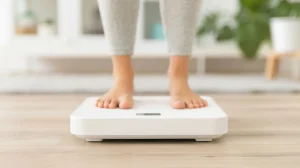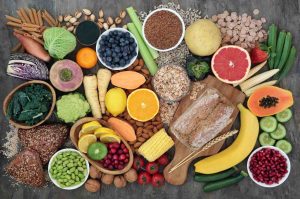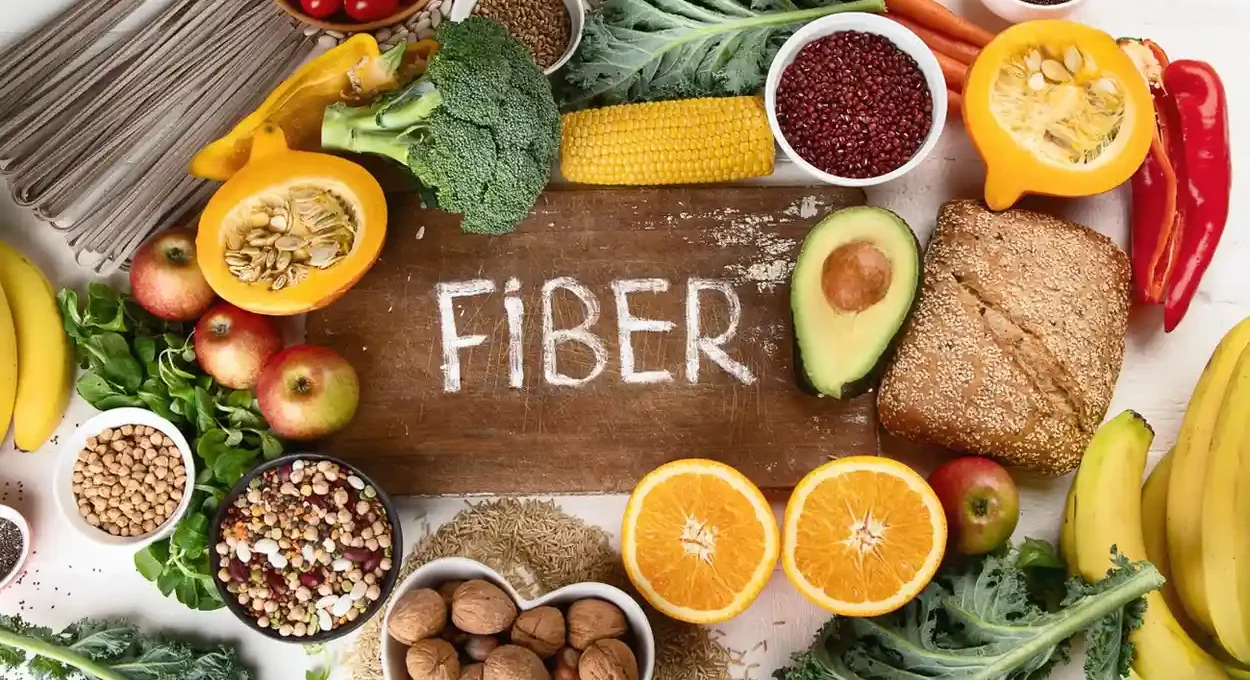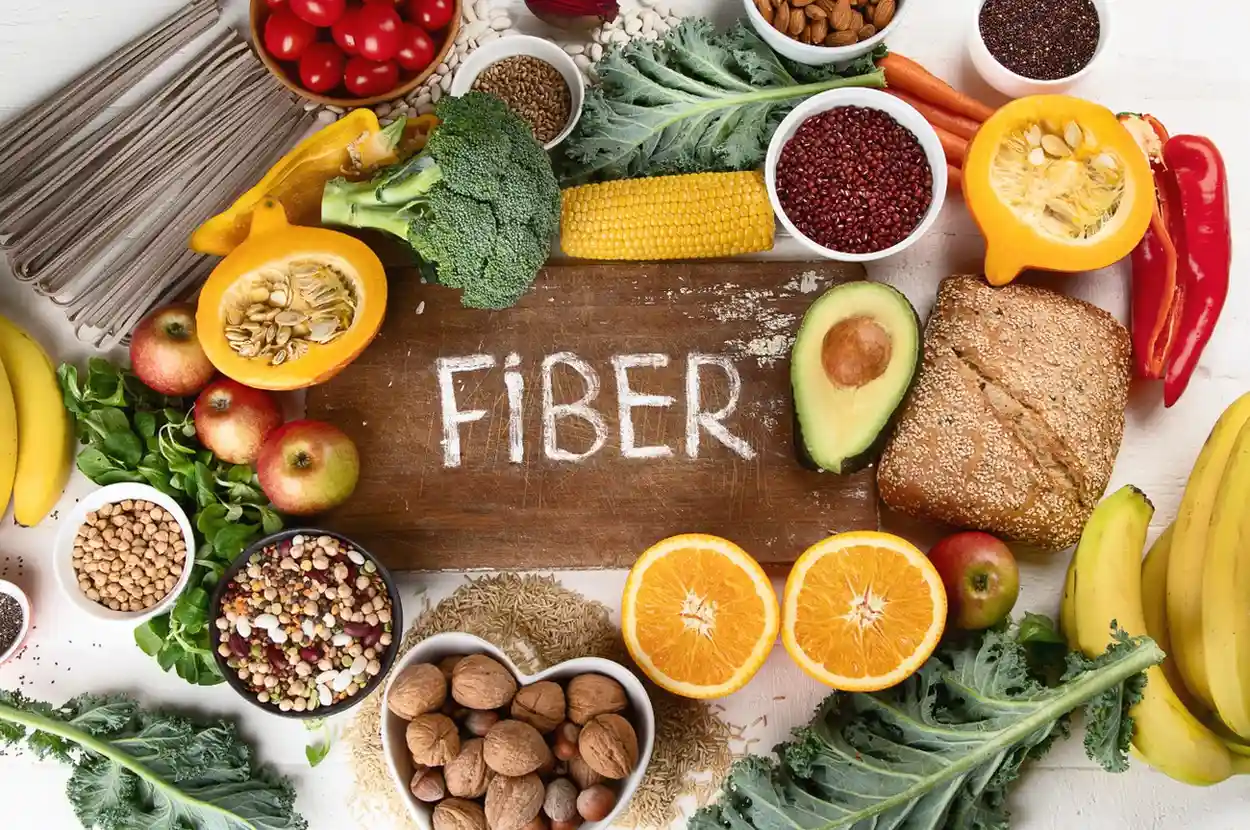Why Fiber Matters in Diabetes Management
A balanced diet is key to a healthy lifestyle for anybody. However, more than that, a balanced diet that incorporates a little extra fiber has a range of benefits for someone with diabetes. In fact, the order in which you eat your food also matters and dictates how your body absorbs sugar. The right amount of fiber in your diet consumed at the right time in the right order can even help accelerate diabetes reversal. It might sound a little overwhelming to plan at first, but it is very easy to implement. If you eat homely balanced food for most meals, the job is already done. All you need is a little more knowledge on foods which are packed with fiber and have them first. Let’s learn more about fiber, its benefits and the best way to consume it.
Health Benefits of Fiber for Diabetics
A diet rich in fiber can help decrease the symptoms of diabetes and accelerate diabetes reversal, it can also prevent heart diseases by lowering your LDL cholesterol. It aids digestion, promotes regular bowel movements, helps in weight management, blood sugar regulation and more. Let us learn about the benefits of fiber for diabetic individuals in detail.
Helps Regulate Blood Sugar Levels
It is often recommended to eat fiber first when having a meal. Eating your fiber before carbs prevents carbs from spiking your blood sugar as fiber acts like a barrier that slows down the absorption of glucose in your gut. The gradual absorption of glucose keeps glucose levels in the body stable and keeps you feeling energetic for longer.
Supports Weight Management

Food high in fiber is bulky and takes longer to digest which slows down the process of stomach emptying, and makes you feel full for longer. Most foods high in fiber also tend to be lower in calories. Therefore, if you eat a high fiber diet, you end up consuming comparatively less food because you are full for longer hours. Since fiber is low in calories, this can also create a calorie deficit, which supports weight loss.
Research shows that weight loss can actually help reverse Type 2 diabetes.
Lowers Cholesterol and Heart Risk
Diabetic individuals are also high-risk heart patients. Fiber reduces LDL cholesterol and hence reduces the risk of damage to the blood vessels that which prevents heart diseases. Soluble fiber especially, binds to the cholesterol particles in the small intestine and prevents them from entering the blood stream. Consuming fiber also reduces inflammation in the body and regulates blood pressure.
Improves Gut Health
Fiber encourages a healthy gut microbiome by serving as food for the good bacteria in our gut. A healthy gut can improve digestion, immune function, and regulate blood sugar. It also deals with the increased inflammation in the gut due to diabetes. Good gut health is also believed to be directly linked to one’s mental well-being.
Types of Fiber and Their Role in Diabetes

Soluble Fiber: Controlling Blood Sugar & Cholesterol
Soluble fiber forms a gel-like substance when dissolved in water. When this happens in your stomach, the presence of a gel-like substance slows down digestion. It lowers cholesterol and sugar, prevents heart diseases, decreases the symptoms of diabetes, helps with gastrointestinal problems and can reduce risk of cancer.
Some foods rich in soluble fiber are, black beans, artichokes, apples, oatmeal, bananas, sunflower seeds, walnuts, etc.
Insoluble Fiber: Supporting Digestion & Satiety
Insoluble fiber speeds up the movement of food in your digestive system and acts as a scouring pad by scrubbing the intestines along the way. Since it does not dissolve in water, it remains intact and bulks up the stool increasing regularity of bowel movements.
Some foods rich in insoluble fiber are almonds, kale, lentils, pears, strawberries, quinoa, walnuts, etc.
High Fiber Foods for Diabetics
Here are some foods high in fiber that can help you control the effects of diabetes:
Whole Grains (Oats, Brown Rice, Quinoa)
Whole grains provide both soluble and insoluble fiber. Which means they help reduce risks of heart diseases, reduce inflammation, and aid digestion.
Legumes (Beans, Lentils, Chickpeas)
Legumes are a great source of plant based protein and soluble fiber. They help you feel fuller for longer and also are known to build muscle.
Fruits (Apples, Pears, Berries)
Fruits like apples, pears and berries are rich in fiber and are full of antioxidants. They keep you feeling hydrated, energetic and light. Fruits like berries rich in anthocyanins also help with anti-aging.
Anthocyanins in fruits help methyl groups from our DNA known as demethylation. This process can help activate genes responsible for cell renewal and longevity and help slow down aging.
Vegetables (Broccoli, Spinach, Carrots)
Non-starchy vegetables like broccoli, spinach, carrots etc. are a rich source of insoluble fiber along with some soluble fiber, vitamins, minerals and antioxidants essential for our body to function.
Nuts & Seeds (Chia Seeds, Flaxseeds, Almonds)
Incorporating moderate quantities of nuts and seeds like almonds, chia seeds, pumpkin seeds, sunflower seeds and flaxseeds, can apply you with healthy fats, protein, and micronutrients along with both soluble and insoluble fiber.
How Much Fiber Do Diabetics Need Daily?
For a healthy individual, the amount of fiber recommended on a daily basis is around 25-30 grams. For someone with diabetes it’s good to aim slightly higher than the recommended amount. But it is important to increase fiber intake gradually to avoid digestion problems and discomfort.
Tips to Add More Fiber to a Diabetic Diet
As a person with diabetes, you must introduce new foods or patterns slowly into your diet. When shifting to a high fiber diet you must take it slow. Gradually increasing the amount of fiber in your diet will help your body adapt to the new routine better without causing any low or high blood sugar episodes.
- Start by changing the order of your meals and putting fiber first.
- Incorporate small portions of extra fiber to your diet increase gradually. If you feel discomfort, reduce it and go even slower.
- Try to spread the intake of fiber into small and frequent meals throughout the day.
- Aim to consume 3-5 servings of non-starchy vegetables, 2 servings of fruit a day. Remember to keep the portion size small depending on your body.
- Include plenty of whole grains
- Snack on nuts but make sure they are not fried or salted.
- Incorporate sunflower, pumpkin and chia seeds to your diet. A great way to do that is to have them with oats.
Final Thoughts
Fiber is a crucial part of a balanced diet. It ensures that your blood pressure remains stable, reduces inflammation and regulates blood sugar. Additionally, fiber aids digestion and bulks up your stool. Fibrous foods also contain plenty of antioxidants and essential vitamins and minerals with a wide range of benefits. Incorporating a healthy amount of fiber in your diet goes a long way and can help control diabetes and in some cases also slow down aging.
अक्सर पूछे जाने वाले प्रश्न
Fiber slows down the absorption of glucose which regulates blood sugar levels. The anti-inflammatory properties of fiber reduce heart risk. Fiber also helps aid digestion and maintain good gut health, which supports weight loss. These factors combined together help control diabetes.
Fresh vegetables, fruits, nuts, seeds, and legumes are rich sources of fiber.
The recommended amount of fiber for a healthy individual is around 25-30 grams per day. Diabetics can aim a little higher but should do so gradually.
No, it only helps slow down the absorption of glucose. Consuming the right amount of fiber over time can help reduce blood sugar levels and control diabetes.
Excess fiber can cause indigestion, bloating and discomfort. Moderation is key.





 1800-270-7000
1800-270-7000







